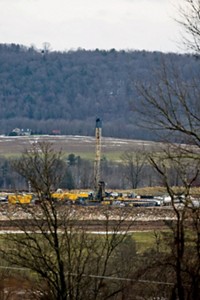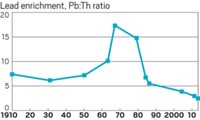Advertisement
Grab your lab coat. Let's get started
Welcome!
Welcome!
Create an account below to get 6 C&EN articles per month, receive newsletters and more - all free.
It seems this is your first time logging in online. Please enter the following information to continue.
As an ACS member you automatically get access to this site. All we need is few more details to create your reading experience.
Not you? Sign in with a different account.
Not you? Sign in with a different account.
ERROR 1
ERROR 1
ERROR 2
ERROR 2
ERROR 2
ERROR 2
ERROR 2
Password and Confirm password must match.
If you have an ACS member number, please enter it here so we can link this account to your membership. (optional)
ERROR 2
ACS values your privacy. By submitting your information, you are gaining access to C&EN and subscribing to our weekly newsletter. We use the information you provide to make your reading experience better, and we will never sell your data to third party members.
Environment
Water Contamination Rises In Texas After Natural Gas Drilling
Barnett Shale water wells have more toxic impurities now than before drilling, with a cause yet to be determined
by Puneet Kollipara
August 5, 2013
| A version of this story appeared in
Volume 91, Issue 31
Determining whether shale gas production leads to tainted groundwater is tough, in part because predrilling water quality measurements are usually lacking. But thanks to tests done in the 1990s by the Texas Water Development Board, some predrilling data are available for aquifers atop the Barnett Shale in northern Texas. Researchers comparing samples from Barnett water wells with those predrilling data report that wells near natural gas production sites have elevated levels of arsenic, selenium, and strontium (Environ. Sci. Technol. 2013, DOI: 10.1021/es4011724). Brian E. Fontenot of the University of Texas, Arlington, and coworkers sampled 91 water wells in the current drilling area and analyzed them with mass spectrometry and gas chromatography methods. The average arsenic, selenium, and strontium concentrations in wells within 5 km of gas production sites significantly exceed predrilling values from the area, with some wells exceeding U.S. drinking-water standards for the toxic substances. Barium concentrations, meanwhile, fell. It’s unclear whether gas production activities caused these trends, the researchers say, but the trends were less remarkable or absent in reference water wells far from gas production sites. Some wells also had methanol and ethanol, which could have come from natural sources or drilling fluids, but the researchers lack predrilling data for those substances for comparison.





Join the conversation
Contact the reporter
Submit a Letter to the Editor for publication
Engage with us on Twitter